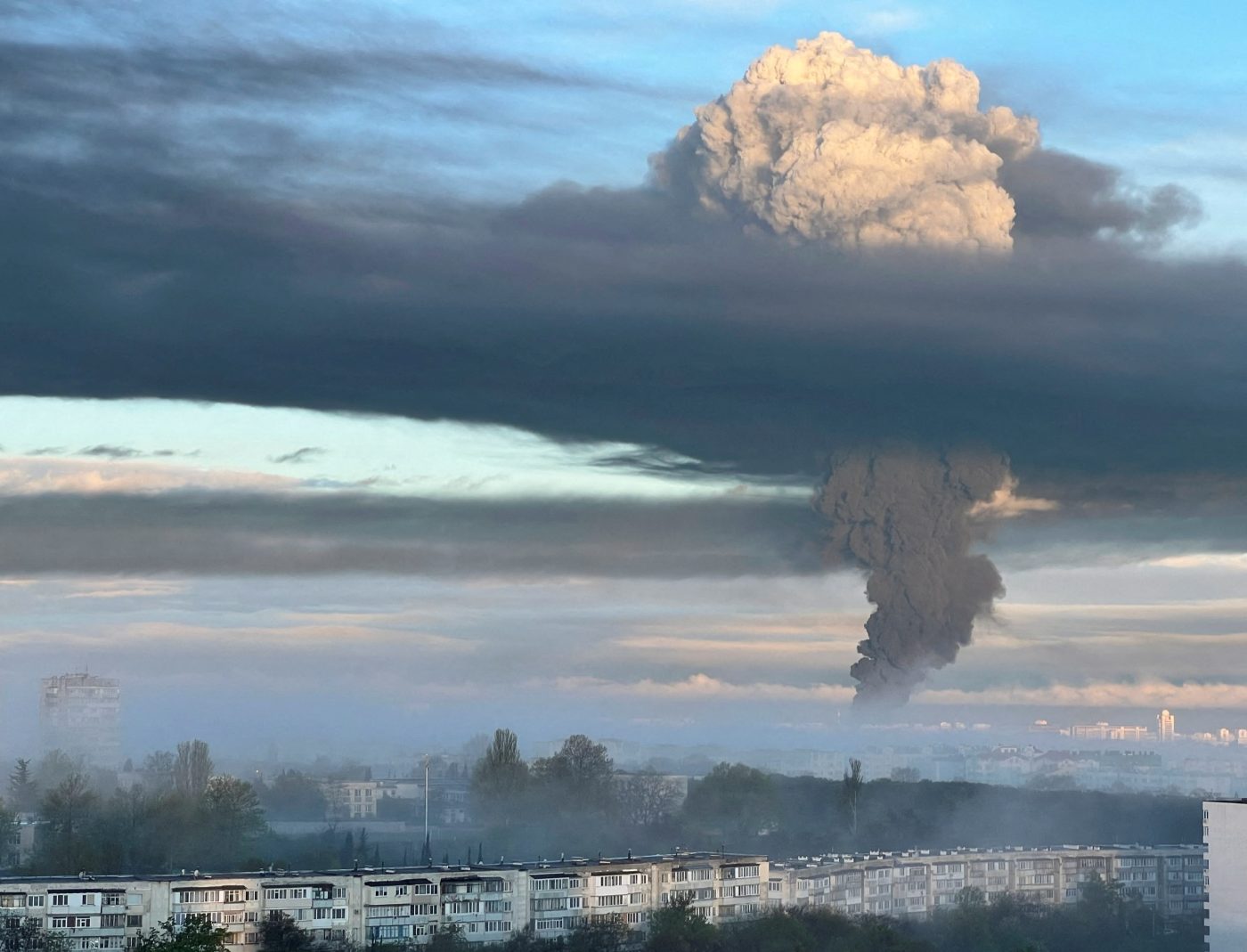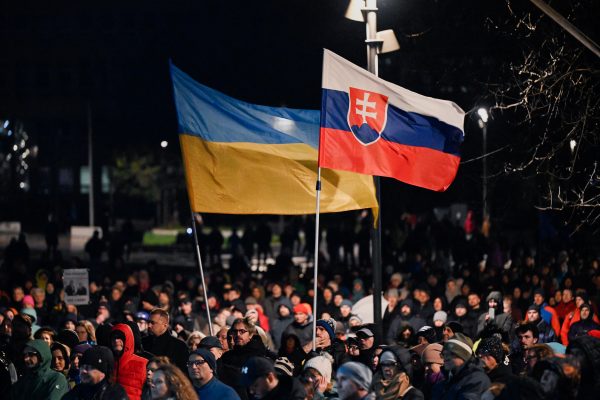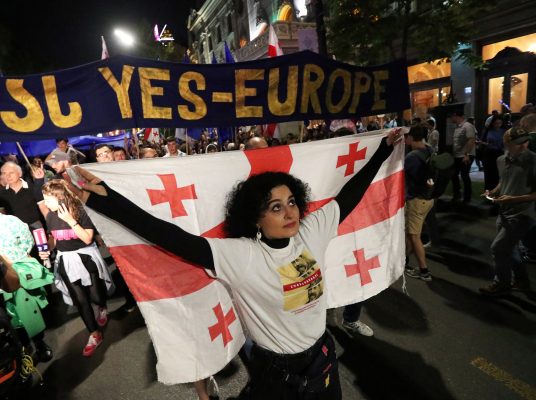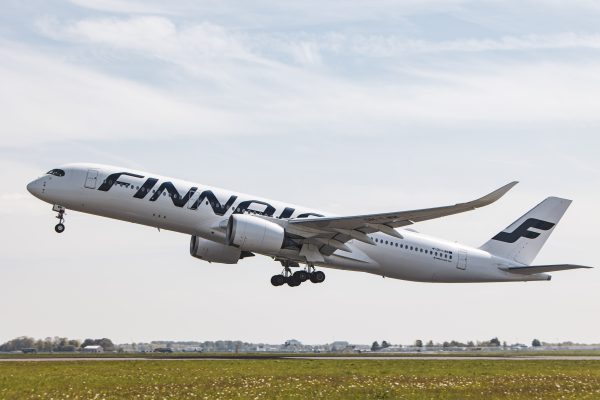The underground resistance movement in Crimea is stepping up attacks as it prepares for the fight to expel Russia from Ukrainian territory. Partisans are using car bombs, sabotage, intelligence gathering, and psyops to undermine the occupiers’ defenses and divert the Kremlin’s forces from the frontline. With echoes of the Special Operations Executive (SOE) in World War II — who Winston Churchill told to “set Europe ablaze” — they have increased the tempo to target critical infrastructure and disrupt Russian logistics.
Prior to Russia’s full-scale invasion, the prospect of Ukraine reclaiming Crimea seemed remote, with many Western observers resigned to Russian control over the peninsula. But with conflict now raging across Ukrainian territory, there is every reason for the government to seek the liberation of all occupied lands.
There is now a constant drip of reports from behind the lines about attacks on Russian occupation personnel, troops, and infrastructure. That uptick will be linked to Ukraine’s counteroffensive and the need to interdict Russian supply lines to the frontline north of Crimea. The resistance is engaging in a broad range of classic guerrilla activities — on June 19, for example, the deputy head of the occupying administration in Zaporizhzhia region was seriously wounded in a car bomb explosion in Simferopol. Two days later, partisans were reported to have sabotaged the railway line near Feodosia. Their ambitions were clear from last summer when partisans were said by the government to have been involved in destroying eight Russian jets at a Crimean airfield.
The structure of these units is unclear, and some are probably working with Ukrainian special forces who will be responsible for some of the attacks. But their existence is certain, not least because partisans emerged after Ukraine’s liberation of Kherson and its hinterland last fall.
The movement involved, “retirees . . . along with students, mechanics, grandmothers, and even a wealthy couple who were fixing up their yacht and got trapped in the city . . . [who] became spirited partisans for the Kherson underground,” according to a New York Times report. The range of activities was vast. The groups were coordinated by Ukrainian intelligence and included key information like Russian positions and warehouses subsequently targeted by long-range artillery.
In the 1991 referendum following the collapse of the Soviet Union, Crimea voted to be part of independent Ukraine, and the Russian Unity Party, which pushed for Crimea’s inclusion as part of Russia, received less than 5% of the vote in elections in 2010. The following year a poll found more than 71% of Crimean residents saw Ukraine as their motherland.
Despite its claims to the contrary, the Kremlin knows this. A leaked report from the Russian Presidential Council for Civil Society and Human Rights estimated the real turnout for the 2014 referendum, which the Kremlin claimed showed 97% wanted to be Russian, was as low as 30%, and only half backed annexation.
At the same time, Ukrainian forces must face the reality that, after almost a decade of integration with Russia and ceaseless ideological conditioning, they will be met by some hostile locals. According to estimates provided in a report by BlackSeaNews and the Black Sea Institute of Strategic Studies, Russia relocated hundreds of thousands of Russians — both documented and undocumented — to Crimea between 2014 and 2020.
Opposition from large segments of Crimean society has caused visible unease among Russian officials. They have stepped up the hunt for partisans, carrying out extensive raids, random identity checks on the streets, and by establishing a network of surveillance cameras.
Denys Chistikov, Ukraine’s deputy permanent representative for Crimea, says a sign of the growing resistance — and Russia’s fear — is the increase in cases against local people for “discrediting the Russian army.”
Atesh, a resistance group, has posted videos on its Telegram channel showing armed activists in Dzhankoi, home to an airbase in northern Crimea, preparing for upcoming battles. They have stockpiled explosives, weapons, and munitions and hope to seize government buildings and military facilities once the Ukrainian armed forces start their attack, the group said.
That day may be some way off. In the meantime, other organizations, such as the Crimean Fighting Seagulls and Yellow Ribbon, are engaged in information and psychological campaigns. They distribute pro-Ukraine propaganda, hang yellow-and-blue ribbons in occupied towns, and leave graffiti to undermine the morale of occupying forces.
Despite their limited ability to win wars outright, partisans can wreak havoc on enemy logistics and infrastructure, tying up forces that might otherwise be deployed on the frontline. The Ukrainian government works with these groups, utilizing encrypted social media apps and websites to encourage and instruct.
The Ukrainian National Resistance Center has played a pivotal role in training, coordinating, and scaling up resistance cells against the occupation. It offers guides and information on a wide range of topics, including drone operation and creating improvised weapons.
Russian military personnel are meanwhile surreptitiously starting the evacuation of their families as the build-up to a Ukrainian offensive intensifies. Soldiers have been discreetly repatriating their wives, children, and parents to Russia, and even the Kremlin-appointed governor of Sevastopol reportedly took the precaution of moving his family to Cyprus.
They have also set up a man-made disaster to greet Kyiv’s forces. Ukraine’s Defense Ministry says Russian engineers have planted explosives at an ammonia plant at Armiansk, in the north of the peninsula, which would create a massive cloud of toxic gas if detonated.
While the occupation administration in Crimea tries to put on a façade of calm, its actions paint a contrasting picture of something akin to trepidation. Whatever the Kremlin says, there is an unspoken acknowledgment that they are occupying foreign territory and ruling over a resentful population.
David Kirichenko is a freelance journalist covering Eastern Europe and an editor at Euromaidan Press. He can be found on Twitter @DVKirichenko.
Europe’s Edge is CEPA’s online journal covering critical topics on the foreign policy docket across Europe and North America. All opinions are those of the author and do not necessarily represent the position or views of the institutions they represent or the Center for European Policy Analysis.





